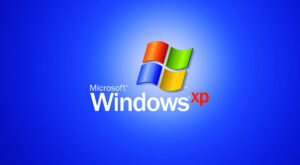
In the construction industry, the accuracy of cost estimations can determine the success or failure of a project. Estimating software plays a critical role in providing precision and efficiency in this process. In this article, we compare two leading solutions: On-Screen Takeoff (OST) and Edge Estimation, exploring their features, usability, and how they can fit into different construction workflows.
On-Screen Takeoff (OST)
Overview: OST, developed by On Center Software, is a comprehensive takeoff solution that enables users to quickly and accurately perform takeoffs from digital plans. Its strength lies in its user-friendly interface and the ability to handle multiple tasks simultaneously.
Key Features:
- User Interface: OST offers an intuitive interface that eases the learning curve for new users.
- Integration: It seamlessly integrates with other On Center Software products, like Quick Bid, for enhanced bid management.
- Accuracy: OST provides precise takeoff capabilities with tools for counting, measuring, and scaling from digital plans.
- Customization: Users can create custom assemblies for frequently used materials and labor costs, streamlining the takeoff process.
Pros:
- It’s well-suited for general contractors and subcontractors who handle diverse projects.
- The visual takeoff process and color-coding help to visualize the project scope effectively.
- It has strong customer support and training resources.
Cons:
- It might be less cost-effective for smaller companies due to its pricing structure.
- It requires a Windows environment, which may not be suitable for Mac users without a virtual machine.
Edge Estimation
Overview: Edge Estimation, also known as The EDGE, is designed specifically for construction professionals and trade subcontractors. It’s known for its robust capabilities in handling complex and specialty trades.
Key Features:
- Trade-Specific Solutions: The EDGE is tailored for specific trades like roofing, drywall, and fireproofing, offering customized tools and reports.
- Automation: It automates labor, material, equipment, and subcontract calculations, improving accuracy and speed.
- Reporting: Comprehensive reporting tools provide detailed insights into every aspect of the estimate.
- Integration: It can integrate with various project management and accounting software.
Pros:
- It is particularly powerful for specialty trade contractors due to its customized approach.
- Advanced users can benefit from its detailed and customizable reporting features.
- The software provides continuous updates to stay aligned with industry standards.
Cons:
- The EDGE has a steeper learning curve due to its comprehensive features.
- It can be more expensive, which might be a barrier for smaller businesses.
Comparative Analysis:
When it comes to choosing between OST and Edge Estimation, it largely depends on the specific needs of the construction firm and the nature of the projects they undertake. OST is renowned for its ease of use and integration with other On Center Software offerings, making it a versatile choice for a wide range of contractors. Edge Estimation, on the other hand, offers a more specialized approach, which may be more beneficial for trades that require detailed and specific estimating tools.
Both platforms offer trial versions, which is a plus for companies to test out before committing to a purchase. The decision also hinges on factors such as the size of the company, the types of projects typically bid on, the existing software ecosystem, and the budget allocated for estimating software.
Conclusion:
The choice between OST and Edge Estimation is not a matter of which is better, but which is more suitable for your company’s workflow, trade focus, and growth plans. Both are powerful tools that can yield a high return on investment through improved estimate accuracy and efficiency. In the end, the right software should align with your business processes, enhance your bidding strategy, and ultimately contribute to your firm’s profitability and success.



